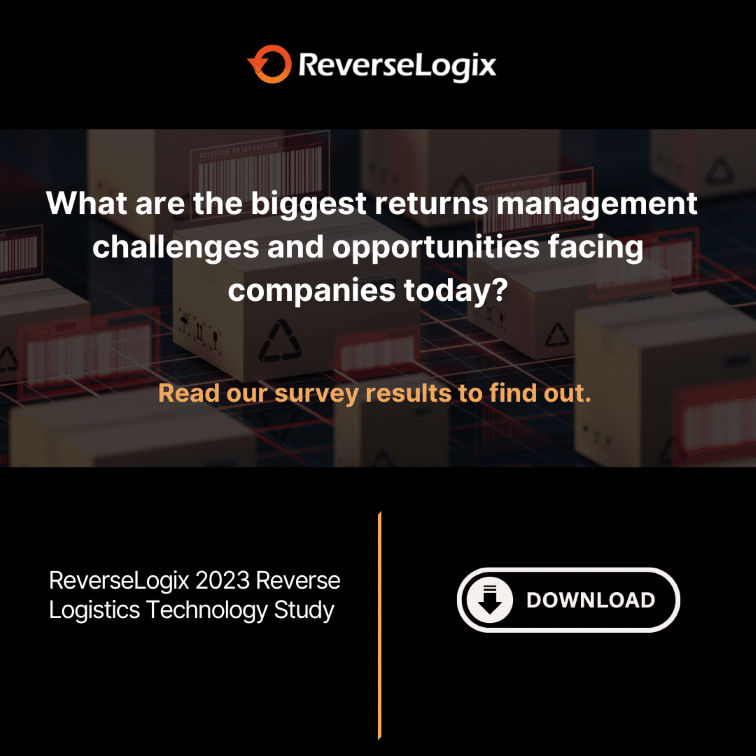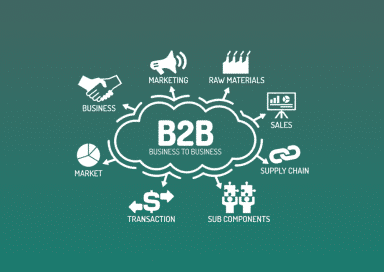As e-commerce continues to reshape our business landscape, B2B enterprises find themselves at a crossroads. While the rise of online sales promises a wealth of opportunities, it also poses an unprecedented challenge: B2B customers now demand the same seamless and efficient return processes that B2C retailers offer.
In this blog post, I am excited to take you on a journey into the intricate world of B2B returns. We’ll explore the complexities, unveil real-world examples, and provide practical solutions to streamline your B2B returns, reduce costs, and enhance customer satisfaction.
In the era of evolved B2B returns, we’ll arm you with the knowledge to thrive.
Why are B2B Returns Complex
1. Diverse Stakeholders: A Web of Decision Makers
Have you ever pondered who decides on a B2B return? It’s not just one person. It’s not just one department. It’s a collective web of stakeholders, from procurement to logistics. Each return decision ripples across the supply chain, cash flow, and business relationships. In B2C, the decision is more direct – the consumer.
2. Volume vs. Value: A Grand Chessboard
B2B returns often involve a multitude of units, but each unit’s value may not be staggering. The collective financial impact, however, is no trifling matter. B2C returns, on the other hand, typically involve lower volumes but may come with a higher unit value. The chessboard is set, and it’s essential to strategize efficiently.
3. Customization and Agreements: The Legal Quagmire
Imagine navigating the legal labyrinth of B2B returns. The landscape is dotted with intricate contracts and agreements. Each business often negotiates bespoke terms, encompassing return policies, warranties, and liability clauses. This complex dance requires meticulous attention to detail. In B2C, the rules are more standardized, with consumer protection laws in play.
4. Unique Product Characteristics: A Return Buffet
B2B returns host a wide range of product types. Industrial machinery, specialized equipment, customized solutions – the variety is astounding. Contrast this with B2C returns, which cover a broader scope of consumer goods. This variety calls for a deep understanding of different products and their specific return challenges. Brands selling through B2C and B2B channels must balance increasingly complex return management factors, from monitoring costs to addressing repairs to managing complex contracts to maintaining inventory levels.
How to Measure the Cost of Your B2B Returns
Understanding the full impact of returns on your bottom line is the first crucial step to regaining control.
Consider this: online return deliveries alone cost companies a staggering $550 billion each year. It’s a substantial dent in profits. But let’s not stop there; dive deeper into the specifics. Yes, measure the direct costs of return shipping and restocking, but also the less obvious expenses, including:
- Lost sales from items that can’t be resold at full price
- Resources consumed by customer service to handle return inquiries and process refunds
- Costs linked to damage control, such as mitigating negative customer reviews and social media posts
An average of 40% of customers intentionally buy items with the intention to return some of them. Understanding your return rate and its financial implications is vital, and at ReverseLogix, we offer the tools to delve deep into these numbers and paint a clearer picture of your return expenditure.
How to Identify the Root Cause of Your Returns Problems
Deciphering the “why” behind your returns is paramount to reducing their frequency. Statistics indicate that 68% of buyers scrutinize their suppliers’ return policies before making a purchase, but sometimes, returns persist despite clear policies. Is it a matter of product quality, or is it perhaps a misalignment of customer expectations? Delve into the analysis of customer feedback, product return patterns, and seasonal fluctuations to pinpoint the root causes.
Companies selling through B2B channels have traditionally used a patchwork of point systems to manage product returns, such as an order management system and warehouse management system. But solutions like a WMS aren’t efficient because they don’t have a complete, end-to-end view of a return’s lifecycle. These point systems also lack automated, returns-related processes, and so your teams spend extra time doing manual data entry, creating reports and forms, or contacting customers one by one.
Here are a few common culprits behind B2B returns:
- Product quality issues: Defective or damaged items remain a significant return trigger. Robust quality control processes can minimize these defects.
- Misaligned customer expectations: If your product descriptions and marketing materials don’t align with the actual products, customers may return them. Transparency in your marketing materials is key.
- Returns comes from a range of customers and locations, such as wholesale, 3PLs and mom-and-pop shops and items may be returned in bulk, yet with multiple return types.
- Complex ordering and return processes: Returns can result from customers struggling with the ordering or return procedures. Ensure these processes are user-friendly.
- Poor customer service: Unresponsive or unhelpful customer service can lead to returns. Train your customer service team to manage returns efficiently and professionally.
ReverseLogix dives deep into your data, identifies trends, and highlights problematic areas. We transform raw data into actionable insights, empowering you to address the core issues behind returns directly.

How to Develop and Implement a B2B Return Prevention Strategy
Return prevention doesn’t mean discouraging returns but rather fine-tuning your processes to reduce them. Craft and implement a comprehensive return prevention strategy. Through tailored workflows, ensure different types of returns receive the right treatment. Offer value-added services, such as warranties and repairs, to retain customers. Create proactive measures that address the root causes we discussed earlier.
For instance, if returns stem from size discrepancies or product quality issues, optimizing these areas can significantly decrease returns. It’s about preventing issues before they lead to returns, and we’re here to guide you in achieving that.
Here are tips for developing and implementing a B2B return prevention strategy:
- Leverage artificial intelligence (AI) and machine learning to identify trends and patterns in your return data, predict which products or customers are likely to return items, and develop targeted prevention strategies.
- Invest in product configurators to help customers choose the right products based on their needs, reducing returns due to product mismatches.
- Implement a customer feedback loop to collect insights from customers about their return experiences. This feedback can identify areas for process improvement.
- Partner with a reverse logistics provider to manage returns efficiently and cost-effectively, streamlining your returns process and maximizing returned product resale.
How to Streamline Your Returns Process for Optimal Efficiency
ReverseLogix’s Returns Management System (RMS) is the game-changer B2B sellers have been waiting for. It streamlines returns processing, making it cost-effective and enhancing the customer service experience. Let’s delve into how ReverseLogix tackles the key challenges of B2B returns.
Full Control over Returns Initiation
Our system empowers customers to initiate returns on their terms while giving B2B sellers full control over the process. The Returns Management System offers a range of features, including:
- Views of Inbound RMAs.
- Disposition Assignment.
- Item Receiving (Scanning RMA Label).
- Order Log/Timestamps.
- Inspection & Grading.
- Customer Notifications.
- Image Capture.
- Queue Based Dashboards.
- Discrepancy Log.
This level of control ensures transparency throughout the returns process for both you and your customers.
Minimize the Revenue Impact of Returns
Managing returns effectively is crucial for maintaining revenue. With ReverseLogix, you can stay on top of return discrepancies, add rules for faster disposition, and offer various types of return entitlements to different customers automatically. This leads to significant savings, with our powerful B2B functionality helping customers save millions of dollars annually by avoiding over-crediting and vendor policy abuse. It ensures that you retain every possible dollar.
Simplified, Reliable Returns
At ReverseLogix, we’ve crafted a solution that simplifies and streamlines the entire B2B returns lifecycle. We are committed to helping companies:
- Receive and process returned items efficiently with no manual work required.
- Standardize analytics, reporting, and processing across all locations.
- Manage discrepancies effectively without destroying customer confidence.
Customer satisfaction is paramount, and our technology allows you to uphold it, even in challenging situations.
A Better B2B Returns Experience
Companies partnering with ReverseLogix are not only delivering a vastly superior returns process that increases customer satisfaction by 15-25%, but they’re also saving valuable employee time with faster workflows. Profits soar up to 5% through total insight into returns data. As the only provider offering an end-to-end RMS, ReverseLogix completes the end-to-end logistics ecosystem, enhancing existing operations with advanced AI-enabled technology.
Customized Workflows for a Smoother Process
We understand that not all returns are the same. That’s why we offer the ability to create customized tasks and workflows for various types of returns, from basic returns and refunds to warranties and repairs. With ReverseLogix’s B2B Returns Module, you get these functionalities on a single, streamlined platform:
- B2B Portal
- ASN Upload
- Returns Reasons
- RMA Initiation
- Warranty Checks
- Product and Policy Validations
- View Account Policies
- Image Capture
Operational Benefits of an RMS
- Data accuracy and consistency: Know how many returns to expect and when.
- Dealer and distributor on-boarding: Set clear expectations of how returns should be initiated.
- Cost savings: Faster times to process returns, fewer employee touch points, and better standardization that catches fraudulent returns.
- Flexibility: Set rules, policies and exceptions for certain dealers, distributors, or item categories.
In this era of the B2B returns revolution, we’re your trusted partner. Time is money, and we help you save both. The B2B returns transformation is here, and ReverseLogix is your ally for success in this evolving landscape.
Conclusion
In this swiftly changing e-commerce landscape, where the demands of B2B intersect with the expectations set by B2C, the enigmatic world of returns unravels before us. Armed with the insights and strategies we’ve delved into, you’re now well-prepared to navigate the intricate realm of B2B returns. As renowned inventor Thomas Edison once said, “Opportunity is missed by most people because it is dressed in overalls and looks like work.”
We’ve demonstrated how to assess their financial impact, unearth the underlying causes, devise a prevention strategy, optimize your process for peak efficiency, and elevate returns into occasions for delivering top-tier customer service.
The era of complex and obscured B2B returns has yielded to a new age characterized by transparency, control, and enhanced profitability.
#EcommerceReturns #B2BReturns #ReverseLogistics #SupplyChain #AutomationInReturns #SustainabilityInEcommerce #CustomerExperience #DataDrivenInsights #FutureOfRetail #ReturnsManagement

